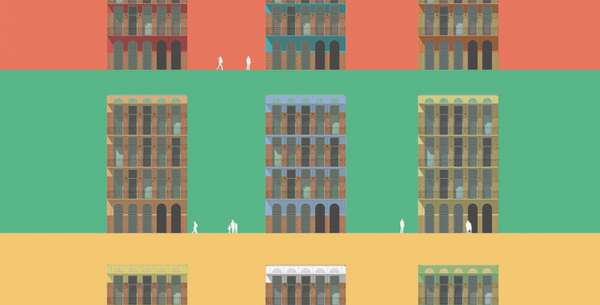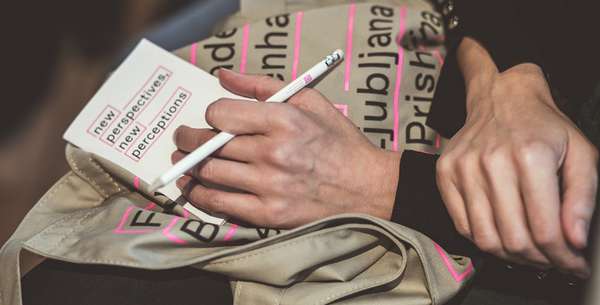Idea by
Iwo Borkowicz
http://www.willhavana.wordpress.com
Call for ideas 2018
A Symbiotic Relation of Cooperative Social Housing and Dispersed Tourism in Havana Vieja.
A Symbiotic Relation of Cooperative Social Housing and Dispersed Tourism in Havana Vieja.
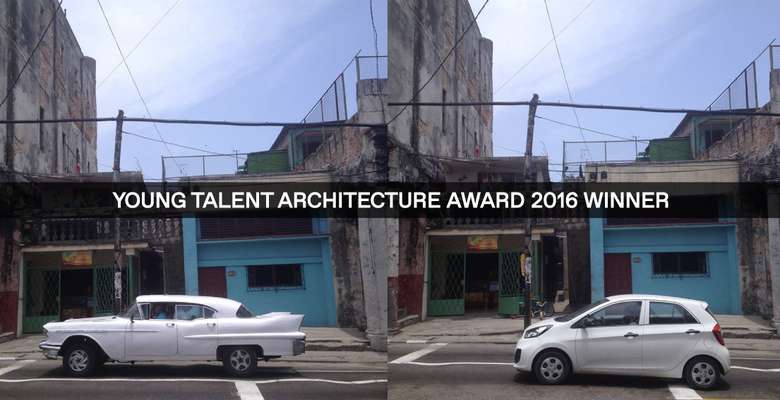
Cuba’s inhabitants struggle with huge daily-life challenges. One of the biggest problems is the housing-shortage. Havana, struggles with extremely high levels of deterioration. The proposal seeks to deal with the urban, economic and social aspects of the productive and regenerative city, empowering the local community, to face the challenging future of Havana and themselves as inhabitants.
Cuba does not have money to build or renovate houses. Hotel situation on Cuba to the contrary does not suffer from financial issues but rightfully is not allowed to grow freely as the impact of mass tourism is dangerous, if invited on wrong terms. One could imagine buildings in areas that attract tourists that would consist of regular flats for Cubans and a proportionate number of hotel units weaved into them, that earn money to pay off the loan taken for the construction of the building itself. Cuban inhabitants would take care for the guests at the same time making a living.
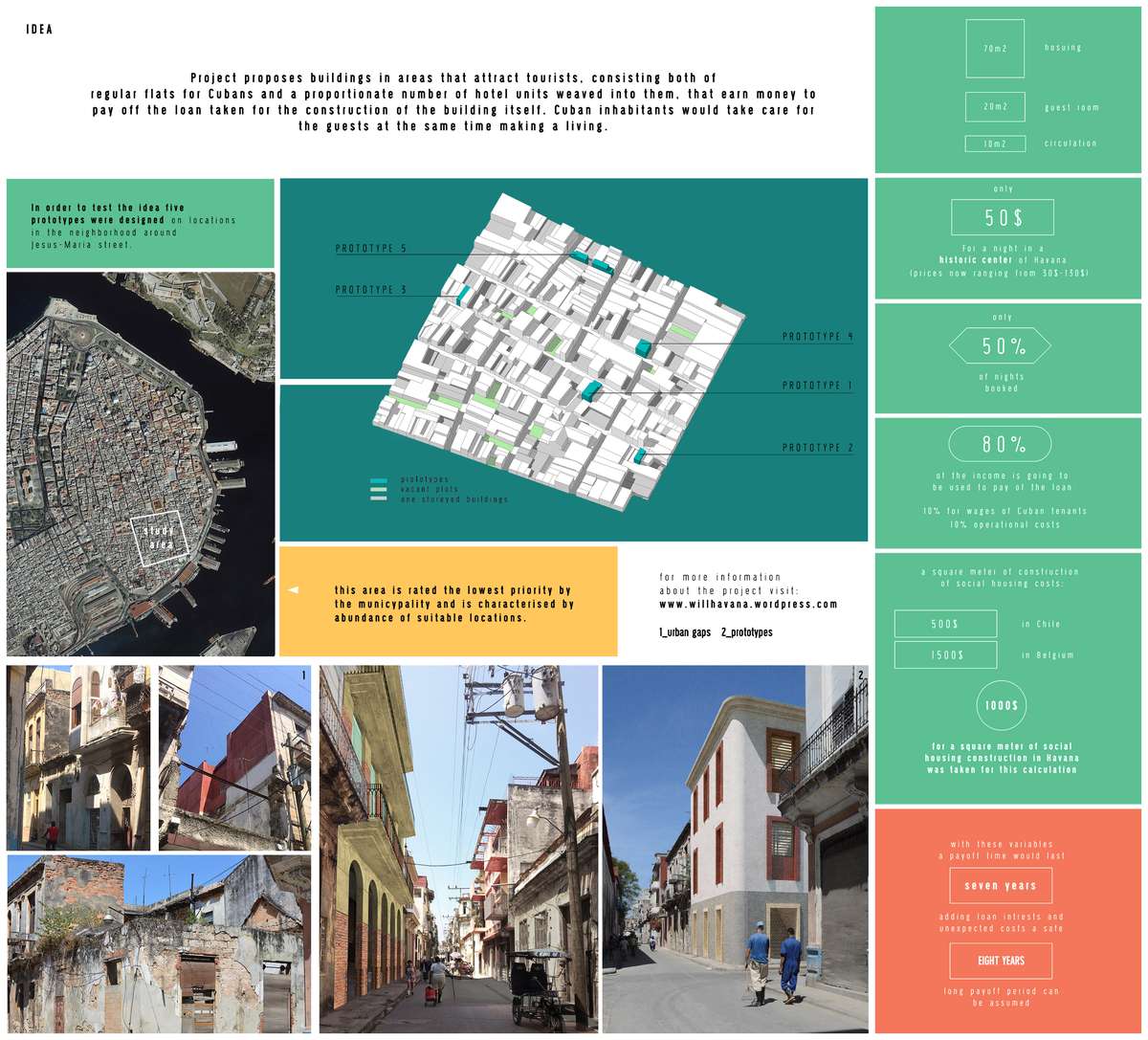
One of the biggest problems is in Cuba is the housing-shortage, with up to 30% of the society awaiting housing. They are not literally homeless as the communistic regime grants everybody housing by accommodating them mostly into existing, often extremely overcrowded houses with even four generation-families living in two-room apartments. Havana, and especially its Old Town (Havana Vieja), struggles with extremely high levels of deterioration of its urban fabric and houses.

On the other hand, a very dynamically growing and wealthy part of Cuba’s economy is tourism. This project is based on a research-stay, interacting with local actors next to data-mining. The proposal seeks to deal with the urban, economic and social aspects of the productive and regenerative city, empowering the local community, to obtain the necessary tools to face the challenging future of Havana and themselves as inhabitants.
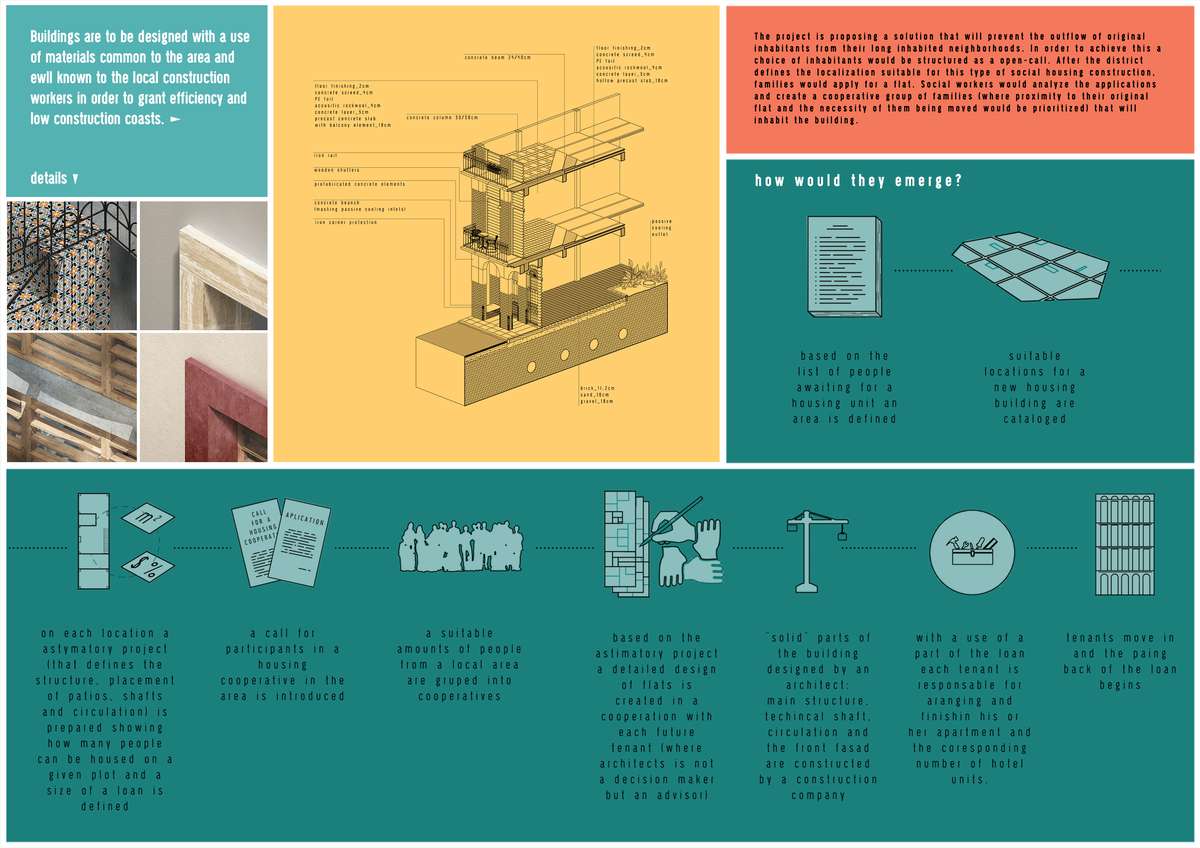
Housing is a right of every citizen of Cuba. Nevertheless, in between 15% to 30% of the Cuban population is waiting to have access to it. The revolutionary government officially acknowledges that, in order to successfully satisfy this housing demand on the island, it needs to build 500.000 new housing units. Independent researchers increase this number to 600.000 and even 1.000.000.
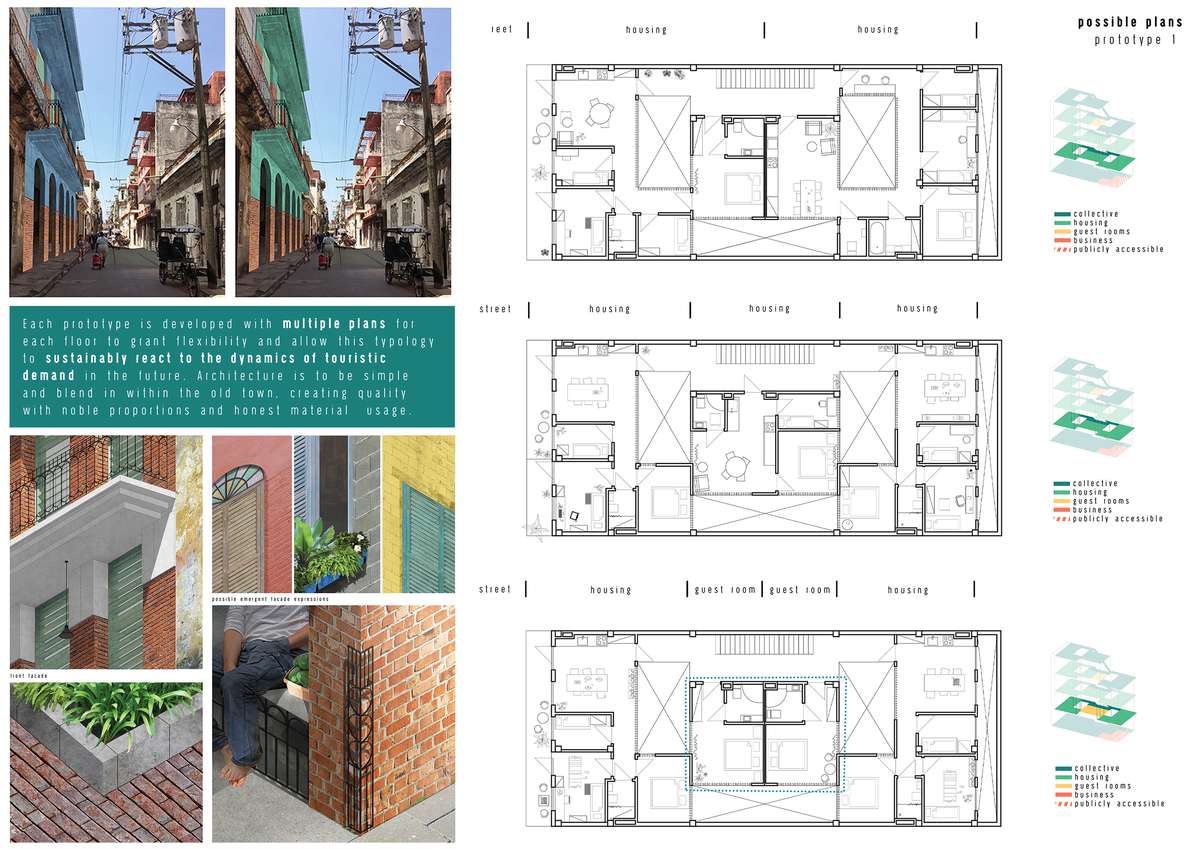
Mass tourism is entering Cuba and is bringing both possibilities and threats. The district of Old Havana which is the main touristic attraction of the country is the first to see the results of its impact. Negative burden of gentrification may lead the oldest Cuban housing district into becoming a theme park, pushing original inhabitants out to the outskirts and destroying this district authenticity and social cohesion.
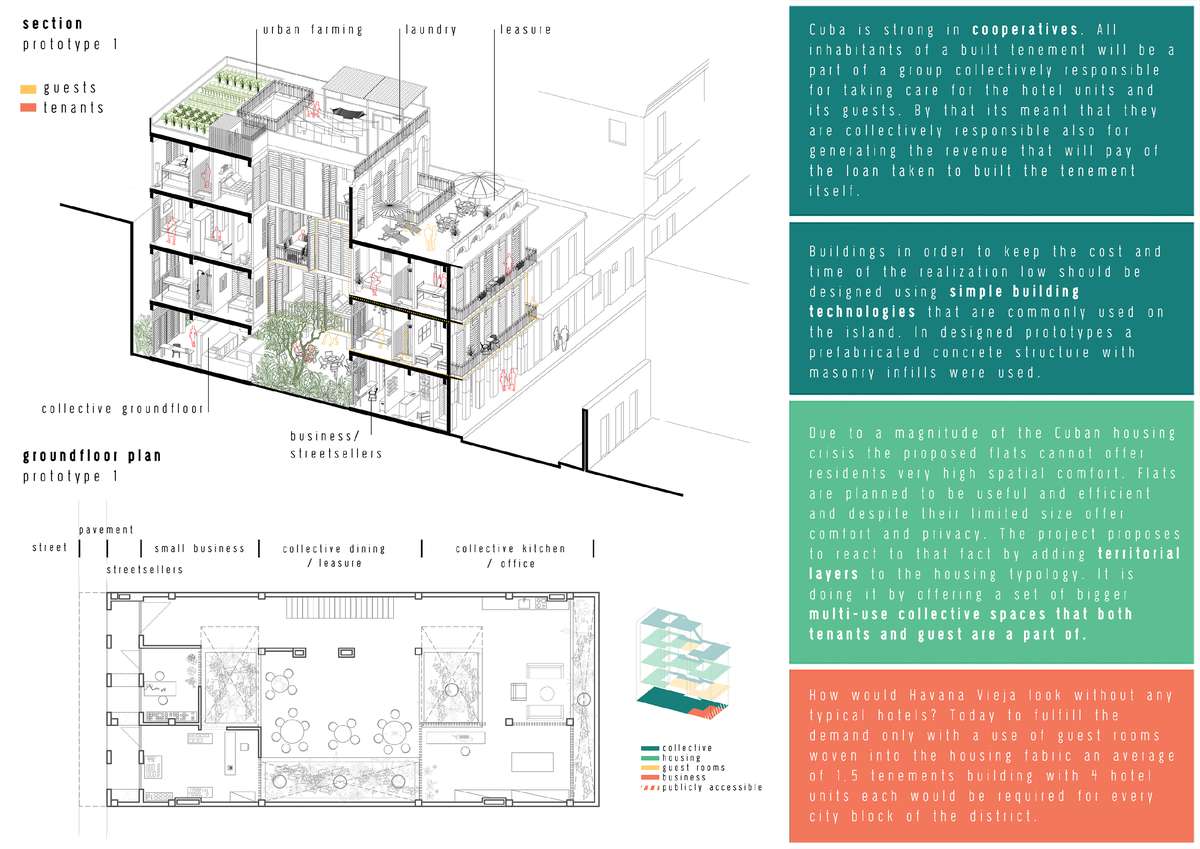
What could be the alternative growth model for urban and social resilience to regenerate the city-center of Havana? Can Cuba grant its people tools that will give them fair chance of gaining from the touristic income despite their present very poor financial situation? This project is trying to answer these questions with a use of a symbiotic relation between social housing and touristic shortage.
A Symbiotic Relation of Cooperative Social Housing and Dispersed Tourism in Havana Vieja.
A Symbiotic Relation of Cooperative Social Housing and Dispersed Tourism in Havana Vieja.

Cuba’s inhabitants struggle with huge daily-life challenges. One of the biggest problems is the housing-shortage. Havana, struggles with extremely high levels of deterioration. The proposal seeks to deal with the urban, economic and social aspects of the productive and regenerative city, empowering the local community, to face the challenging future of Havana and themselves as inhabitants.
Cuba does not have money to build or renovate houses. Hotel situation on Cuba to the contrary does not suffer from financial issues but rightfully is not allowed to grow freely as the impact of mass tourism is dangerous, if invited on wrong terms. One could imagine buildings in areas that attract tourists that would consist of regular flats for Cubans and a proportionate number of hotel units weaved into them, that earn money to pay off the loan taken for the construction of the building itself. Cuban inhabitants would take care for the guests at the same time making a living.
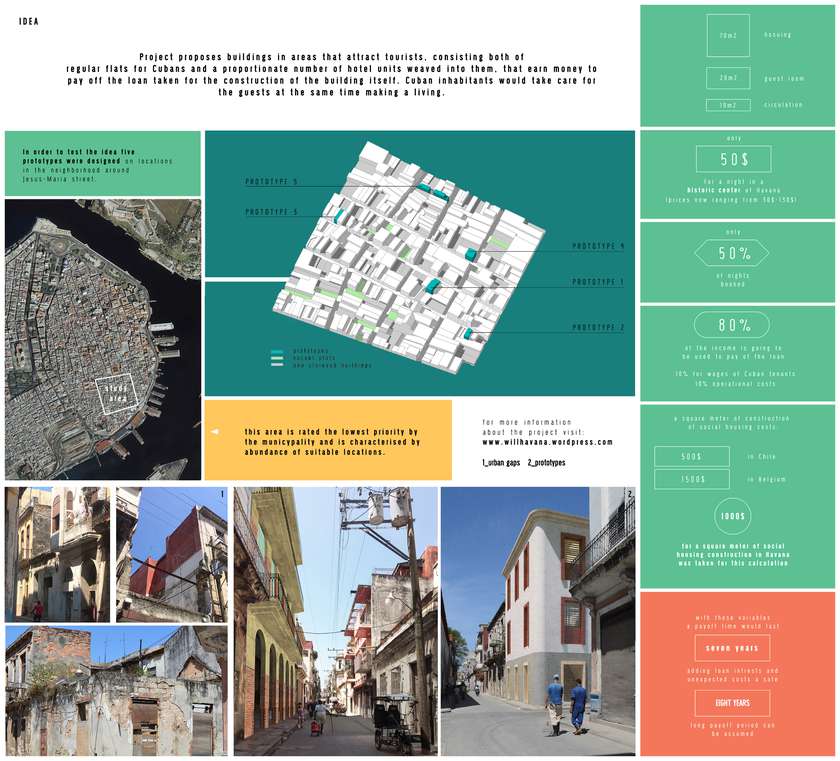
One of the biggest problems is in Cuba is the housing-shortage, with up to 30% of the society awaiting housing. They are not literally homeless as the communistic regime grants everybody housing by accommodating them mostly into existing, often extremely overcrowded houses with even four generation-families living in two-room apartments. Havana, and especially its Old Town (Havana Vieja), struggles with extremely high levels of deterioration of its urban fabric and houses.
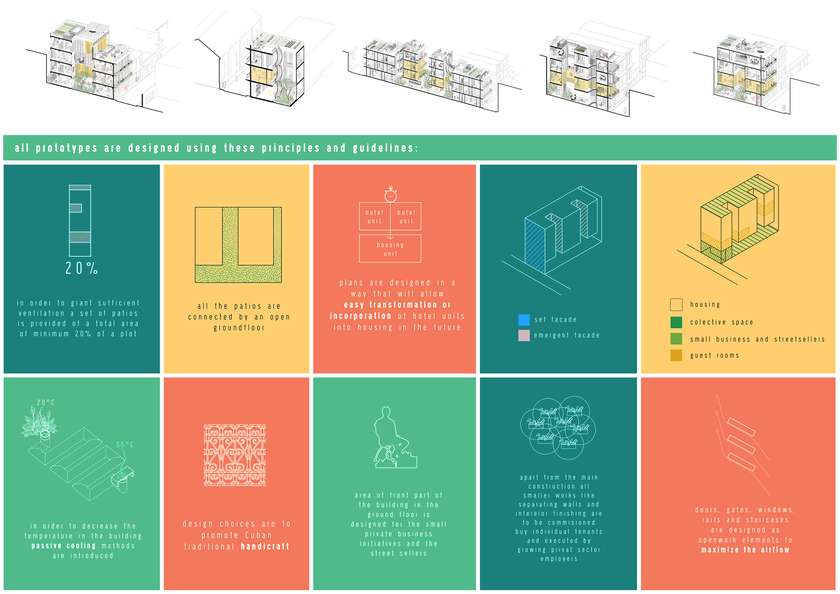
On the other hand, a very dynamically growing and wealthy part of Cuba’s economy is tourism. This project is based on a research-stay, interacting with local actors next to data-mining. The proposal seeks to deal with the urban, economic and social aspects of the productive and regenerative city, empowering the local community, to obtain the necessary tools to face the challenging future of Havana and themselves as inhabitants.
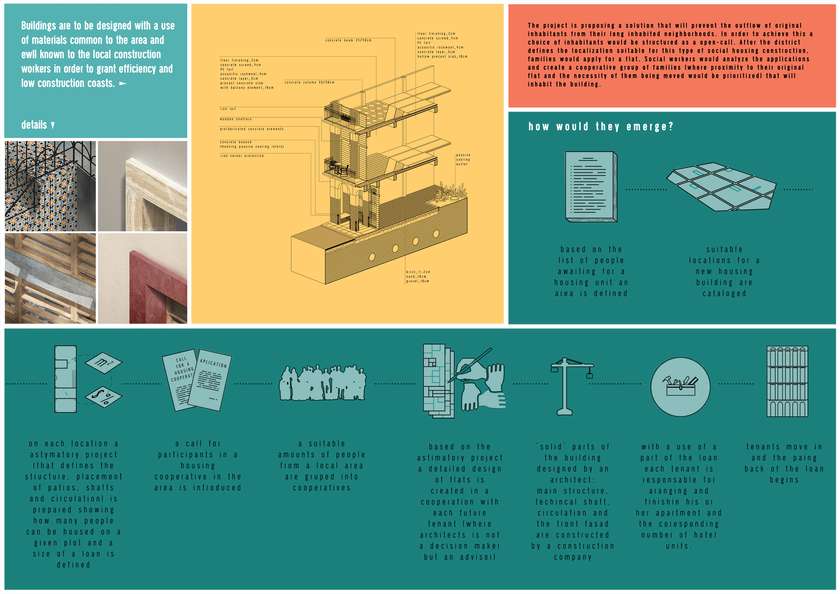
Housing is a right of every citizen of Cuba. Nevertheless, in between 15% to 30% of the Cuban population is waiting to have access to it. The revolutionary government officially acknowledges that, in order to successfully satisfy this housing demand on the island, it needs to build 500.000 new housing units. Independent researchers increase this number to 600.000 and even 1.000.000.
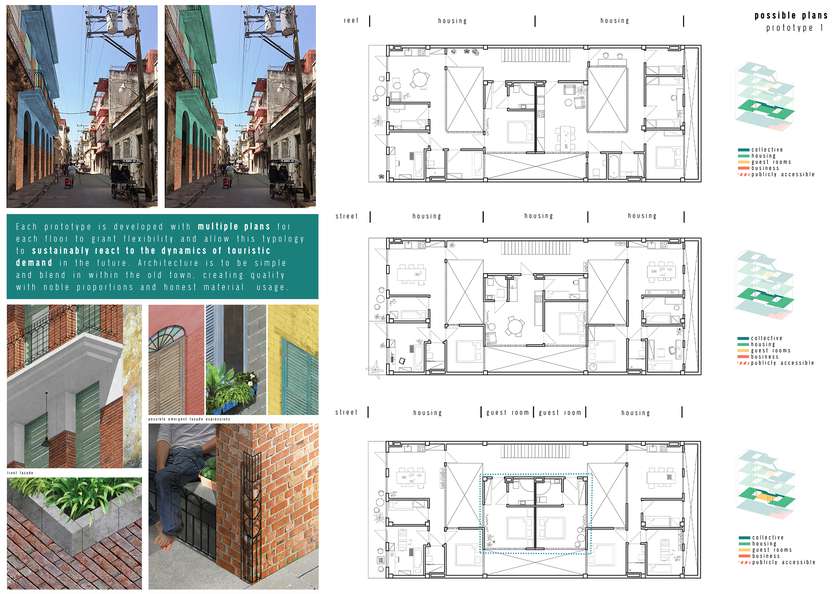
Mass tourism is entering Cuba and is bringing both possibilities and threats. The district of Old Havana which is the main touristic attraction of the country is the first to see the results of its impact. Negative burden of gentrification may lead the oldest Cuban housing district into becoming a theme park, pushing original inhabitants out to the outskirts and destroying this district authenticity and social cohesion.
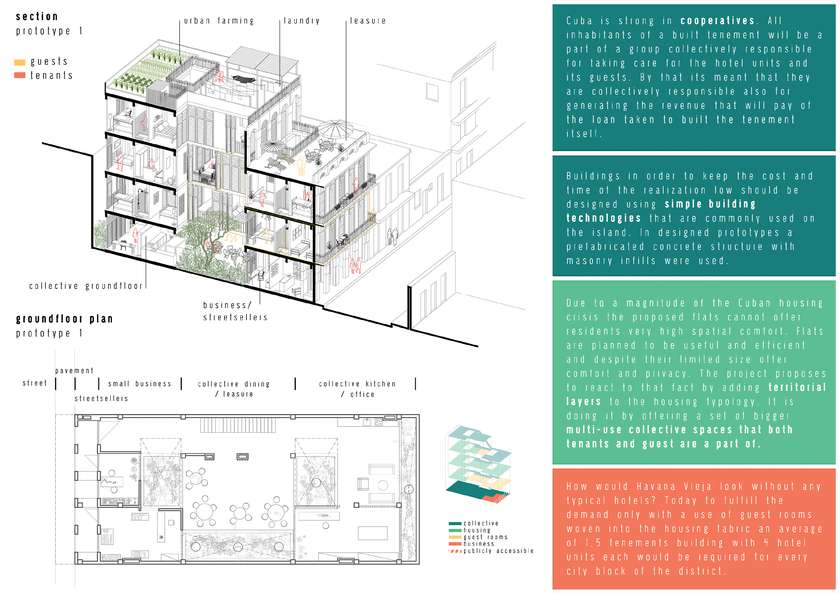
What could be the alternative growth model for urban and social resilience to regenerate the city-center of Havana? Can Cuba grant its people tools that will give them fair chance of gaining from the touristic income despite their present very poor financial situation? This project is trying to answer these questions with a use of a symbiotic relation between social housing and touristic shortage.
